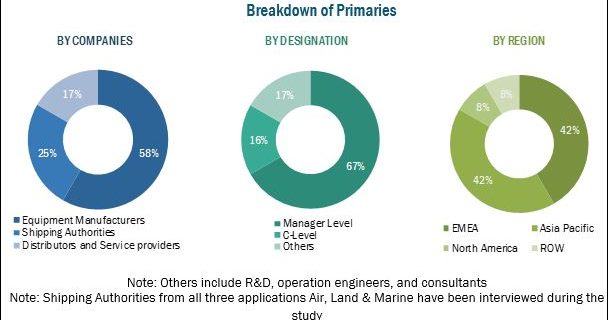
The report “Cargo Handling Equipment Market by Application (Air, Land, & Marine), Equipment (Conveyors, Forklift Truck, Aviation Dolly, Pallet Jack, AGV, Crane, RTG, Loader, Stacker, Straddle Carrier, Terminal Tractor), Propulsion, and Region – Global Forecast to 2025″, The market for cargo handling equipment is projected to grow at a CAGR of 3.61%, during the forecast period, to reach a market size of USD 28.02 billion by 2025 from an estimated USD 21.85 billion in 2018. The increasing cargo trade across the world, stringent emission regulations for cargo handling equipment, and strong demand in Asia Pacific and Europe, Middle East, and Africa would fuel the demand for cargo handling equipment.
The diesel propulsion segment is estimated to hold the largest share of the cargo handling equipment market during the forecast period.
The diesel propulsion segment is projected to hold the largest market share from 2018 to 2025. Most of the cargo handling equipment, such as straddle carriers, reach stackers, forklift trucks, RTG cranes, and terminal tractors, run on diesel engines. According to MarketsandMarkets analysis, the diesel engine segment is estimated to hold the largest share of the cargo handling equipment market in 2018. High power and low cost make diesel propelled equipment the first choice for equipment manufacturers.
Download PDF Brochure @ https://www.marketsandmarkets.com/pdfdownloadNew.asp?id=90309268
The RTG is expected to be the fastest growing cargo handling equipment from 2018 to 2025.
RTG is a mobile equipment used in intermodal operations to ground or stack containers at sea ports. RTGs are installed with diesel, electric, or hybrid engines. Last few years have seen a significant increase in seaborne trade across different industry verticals, including automotive, chemicals, agriculture, textiles, and pharmaceuticals. Increased seaborne trade has, in turn, increased the demand for cargo handlers for quick loading and transportation of cargo at the port terminals. UNCTAD has estimated that cargo volumes would grow at a CAGR of 3.2% between 2017 and 2022.
Cargo flows are set to expand across all segments, which will drive the demand for increased cargo handling capacity of the ports. Additionally, stringent emission norms are increasing the demand for electric cargo handling equipment to reduce the fleet level emission. These factors have increased the demand for sophisticated cargo handling equipment such as RTG, which can carry load up to 40 tons at a time, in electric and hybrid variants.
Asia Pacific: The largest cargo handling equipment market
As per the World Bank, China is the global leader in cargo handling capacity and accounted for 28.5% of the total cargo moved in 2017. According to MarketsandMarkets’ analyses, the cargo handling capacity in Asia stood at around 40–42% in terms of value in 2018. The ports in Shanghai (China), Shenzhen (China), Hong Kong, Ningbo-Zhoushan (China), Singapore, and Keihin (Japan) handle millions of TEU annually, which is driving the growth of the market in Asia Pacific. This trend is estimated to continue and, to handle the increasing cargo traffic, an increase in the demand for cargo handling equipment as well as automation at ports is expected in the region in coming years.
Request Free Sample Report @ https://www.marketsandmarkets.com/requestsampleNew.asp?id=90309268
Key Players:
The prominent players in the cargo handling equipment market are Kalmar (Finland), Konecranes (Finland), Liebherr (Switzerland), Hyster (US), Sany (China), Mitsubishi (Japan), Toyota Industries (Japan), Kion group (Germany), Macgregor (Finland), JBT corporation (US), Terex (US) and Anhui Heli (China)
Critical Questions:
- Why diesel propelled cargo equipment has the largest market today and will also dominate in future as well?
- How and why marine cargo handling equipment’s are the fastest growing?
- How the industry players will address the challenge of increasing accidents related to cargo handling equipment?
To speak to our analyst for a discussion on the above findings, click Speak to Analyst

